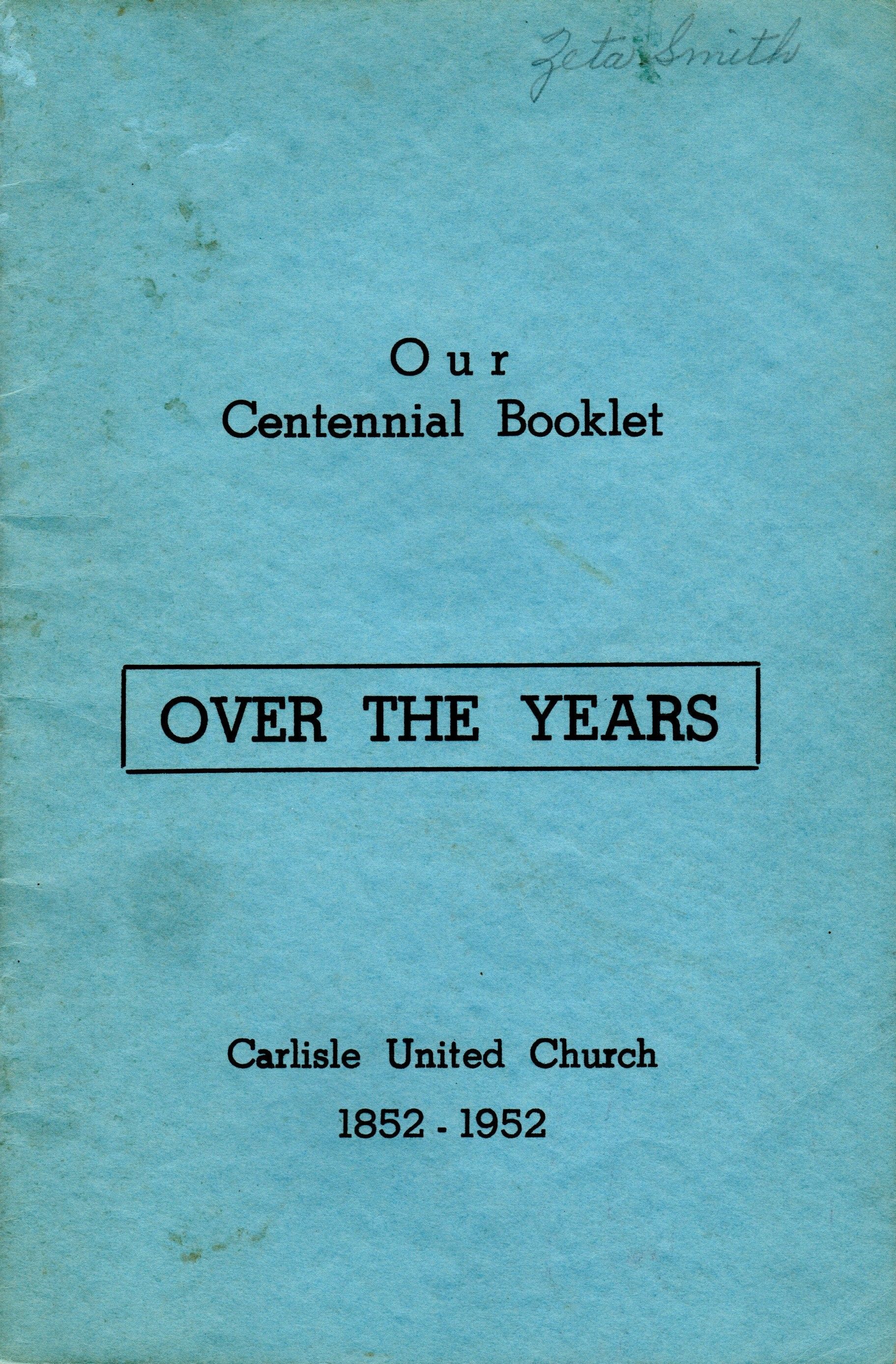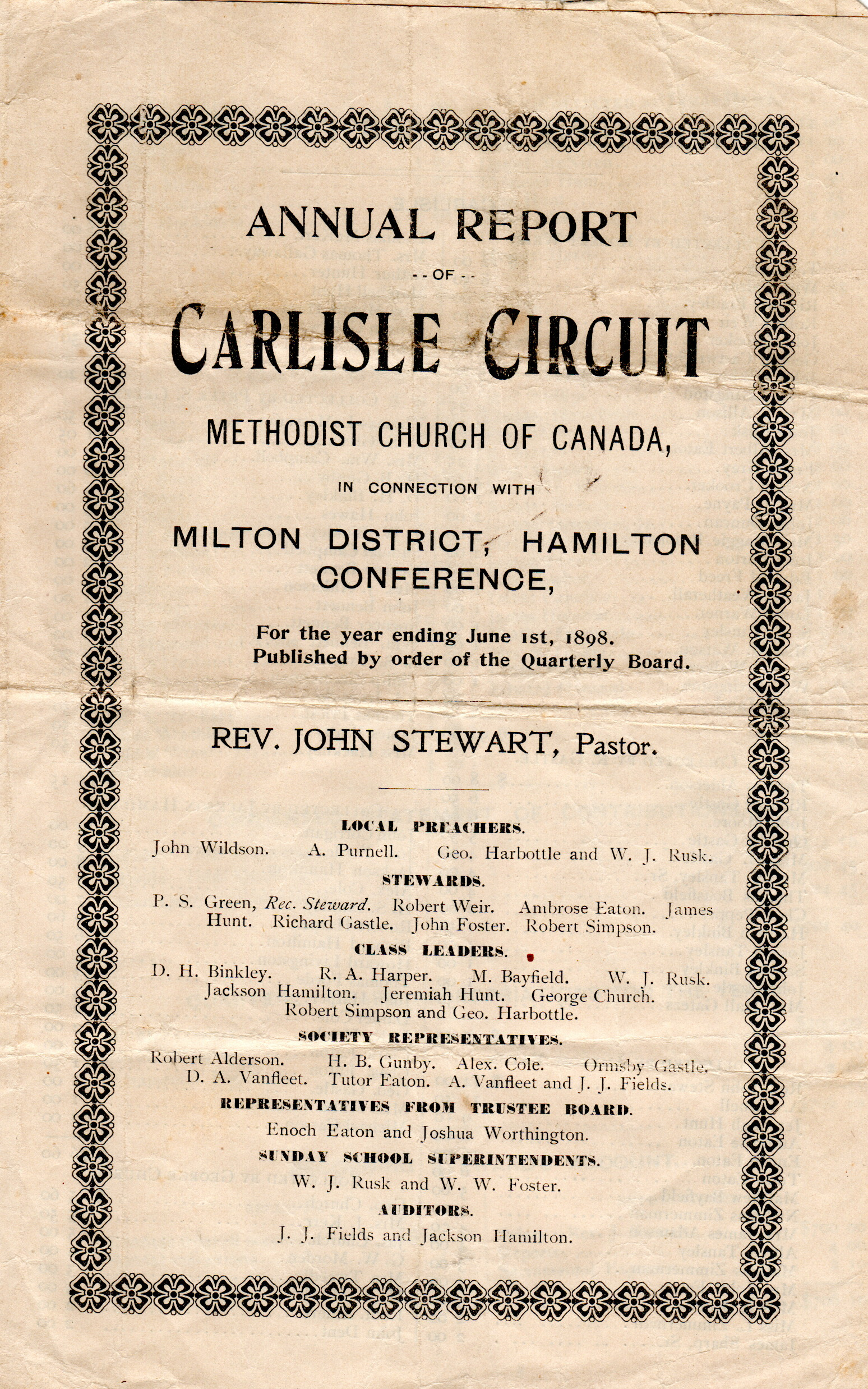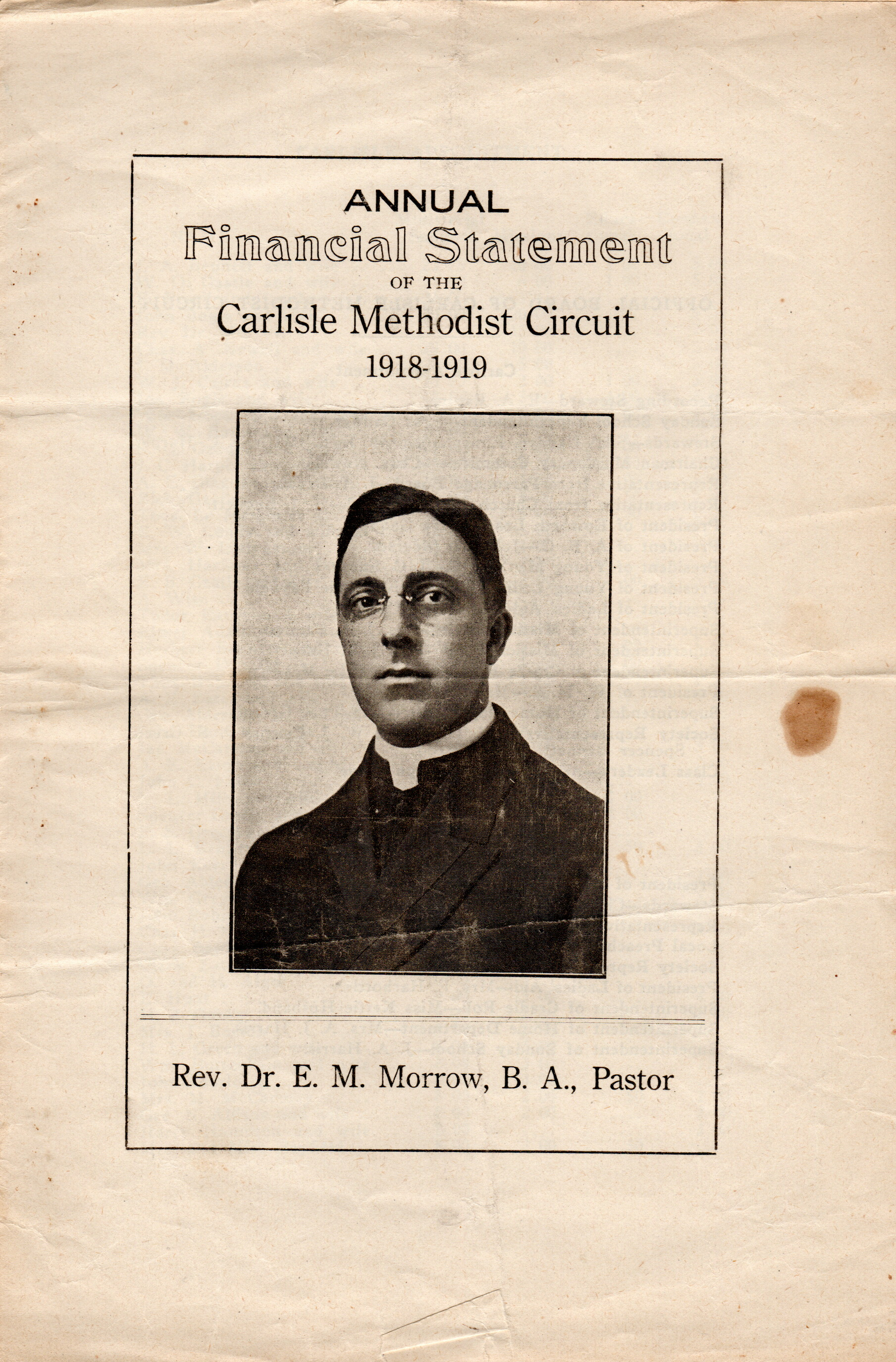
Church History
Church History
Our first church was in the home of John and Catherine Eaton who moved to this area in 1826 and took up residence on 400 acres bordered by the 9th Concession (Carlisle Road) in the North, Centre Road in the East and the 8th Concession in the South. John Eaton had built a 13 room frame home to accommodate his large family with 11 children, and one room in their house was used as a meeting place for religious services conducted by local preachers including John Eaton himself. This was so successful that they eventually built a lean-to onto their home to accommodate the increasing number of worshippers.
John and Catherine Eaton were also instrumental in having the first church established in Carlisle. Members of the church began to plan a cemetery in 1836. John Eaton was very ill at the time, and it was expected that his would be the first burial there. However, another local resident, Alexander Kerr, was killed on July 10, 1836 by a falling tree, so he became the first occupant of the new cemetery. John Eaton died in 1837 when he was 64, but Catherine lived until she was 89. Both are buried in the church cemetery which has been enlarged three times since its inception.
In 1839, the congregation had outgrown the Eaton home entirely, and a small building was constructed for use as both a church and a schoolhouse. It was called the "Chapel at the Twelve" and located southeast of our present church building. According to a receipt which has been preserved, Levinius H. Eaton paid John Morden £2 for building the chapel. The church was a member of the Society of Methodists and was served by ministers called "circuit riders" who used horses to travel to even the remotest settlements to bring the gospel of Christ to the settlers. Since it would take several weeks for a minister to cover his circuit, it was necessary that lay spiritual leaders called "class leaders" lead the services between the minister's visits. The preaching point was known as "Eaton" and belonged to the Dundas circuit which had separated from the Niagara circuit in 1823.
In 1852, a white frame church building was constructed immediately South of our present church in what is now part of the cemetery. It was an oblong structure with two classrooms in the back, and the motto "Holiness Becometh Thy House, Oh Lord of Hosts" written in an arch over the dorsal wall as seen in the picture above, right. In the early days, the congregation was divided with the men sitting on one side of the church and the women on the other side in keeping with old Methodist tradition.
At this time, there was no organ or choir, and the music was led by a precentor using a tuning fork. Around this time, the village was named "Carlisle" and in 1854, the church was on the newly established Waterdown circuit.
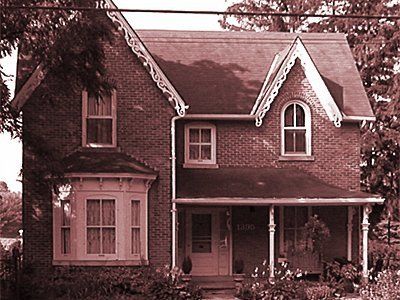
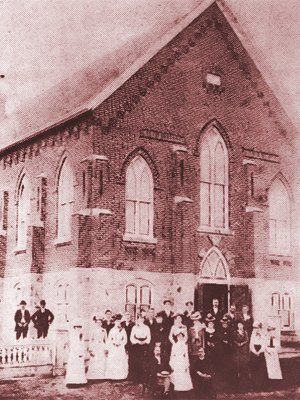
Also during the 1870s, the first choir was formed, and the first organ was purchased. Sunday School began during these years. There were two church services, morning and evening, every Sunday with Sunday School (not just for children) in the afternoon around 2:30 pm.
In 1875, a Carlisle circuit was established which allowed for a full-time minister. The congregation decided in 1876 that the newly married minister required his own home and the first parsonage was built on a half acre of land on the west side of Centre Road near Progreston Road (now 1395 Centre Road - see photo above).
The total cost of land, house, well, barn and fence came to $2169.11 in 1876. From that date to 1953, the parsonage was home to 24 ministers before it was sold as a private home.
Around the turn of the century, Miss Annie Chapman, a local schoolteacher and active church member, donated the church bell which is still in use every Sunday to call our congregation to worship. Although the gift of the bell was gratefully received, it presented the problem of how to install it since it weighed half a ton and the bell tower, which first had to be constructed (note the picture above dated 1900 without the bell tower), was over three stories from the ground.
The installation was completed on Jan. 2nd, 1901, and it was first tolled by Jeremiah Hunt on receiving the news of the death of Queen Victoria in the same year. Most recently, it has been rung for many years by Mr. Reid Dunham.
In its early years, the church was lit with tallow candles, then by kerosene, and eventually by gas lamps on a large central chandelier. Electricity was installed in the 1920's.
After the arrival of the "horseless carriage" (automobile), certain rules were established to assure that everyone made it home safely from the evening services. Those who owned automobiles knew that no motor car could be started until all the horses had left the church sheds (hence the "horses first" rule). These sheds were built in a U-shape parallel to the road, on the north side of the lot as seen on the left hand side in the picture to the right. They formed a shelter from the wind and snow for the animals during the service. In the early 1920's, there were as may as 50 buggies (or cutters) parked in the sheds while cars were few and far between. Each family had a regular place to tie its horse. Occasionally a horse, thinking the service too lengthy, would slip off its bridle and go home, leaving the family to walk or ride with a neighbour. The steep drop from the front entrance of our church to the road was built deliberately so that people could step directly from the front "stoop" into a waiting horse-drawn carriage or sleigh.


Peter Green (whose grandson partnered with Douglas Bates to establish Bates and Green Garage in 1954) was the first Carlisle resident to own an automobile. It had oil lamps, back and front, which had to be lit for the trip home. Peter would roll up a newspaper, light it in the church furnace, then run outside to light the lamps on his car. Needless to say, he often had to make many trips before this was successfully accomplished! There were no fire regulations in those days.
The year 1925 marked the union of the Presbyterian, Congregationalist and Methodist churches, and Carlisle became a member of The United Church of Canada. In the same year, the Ladies' Aid, which had been established at Carlisle Methodist Church in 1894, became known as the Women's Association (W.A.). Eventually the W.A. and the Women's Missionary Society (W.M.S.) first organized in Carlisle in 1913 came together to form the United Church Women (U.C.W.) in 1962.
The centennial of the church in Carlisle was celebrated in 1952. In 1953, it was felt that building a new parsonage was preferable over paying the upkeep on the 1876 building. Accordingly, on October 10, 1953, a building lot at the southeast corner of Progreston Road and Centre Road (now 1386 Centre Road - see photo) was purchased and a new manse built. It was officially opened on Wednesday, December 9, 1953.
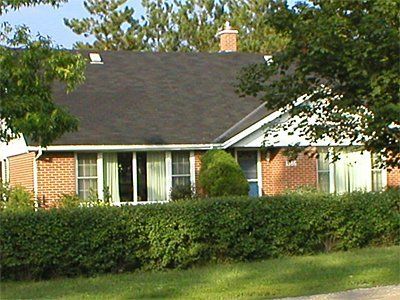

In 1966, 75 years after construction of the present church building and woodshed, back kitchen and outhouses, it was decided that there was a need for inside washrooms, a modern efficient kitchen and Sunday School and meeting room space. Therefore, the Christian Education (C.E.) wing was added. In 1989, Centennial Hall and the elevator were added, and in 1995, to improve hearing accessibility, the infrared audio system was installed.
For more than 140 years, people in this community have been blessed by working and sharing in the life of Carlisle United Church.
With enthusiasm and dedication we will continue to serve God and humankind in a vital way.
Compiled by: Andrea O. McRae
Sources:
Turcotte, Dorothy. Carlisle Beginnings. (Cambellville ON: Dorothy Turcotte, 1994)
Munro, Arlene and Brian Henderson.
A History of Carlisle United Church from its beginnings to 1991. (Carlisle ON, 1991)
(click on the cover to download document)
Copyright 2018 by Carlisle United Church
powered by
Churchweb Canada
